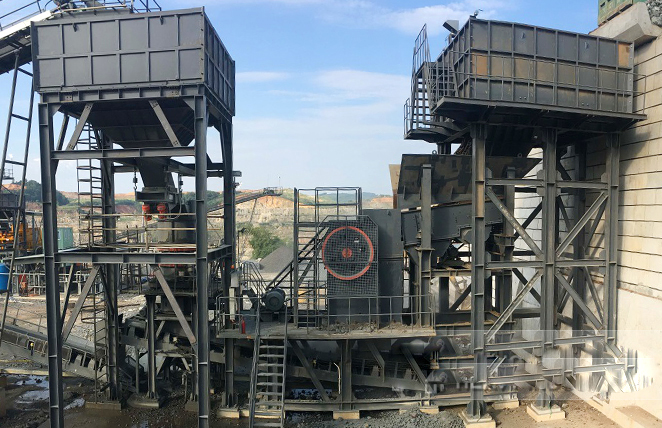A hammer crusher is a highly efficient machine used for crushing stones, rocks, and minerals into smaller pieces. It works by using high-speed rotating hammers to impact and break down materials.
Key Features of Hammer Crusher for Stone Crushing:
1. High Crushing Efficiency – The impact force of the hammers ensures effective size reduction.
2. Adjustable Output Size – The final product size can be controlled by adjusting the grate bars or screen openings.
3. Versatile Applications – Suitable for crushing various materials like limestone, coal, gypsum, brick, and other medium-hard stones.
4. Simple Structure & Easy Maintenance – Fewer moving parts compared to jaw or cone crushers.
5. Cost-Effective – Lower initial investment and operational costs than other crushers.
 Working Principle:
Working Principle:
– The motor drives the rotor to rotate at high speed inside the crushing chamber.
– Stones are fed into the crusher and struck by the hammers, then thrown against impact plates or grate bars.
– Crushed material exits through the bottom screen openings.
Common Types of Hammer Crushers:
1. Reversible Hammer Crusher – Allows hammers to rotate in both directions for longer service life.
2. Non-Reversible Hammer Crusher – Hammers are fixed in one direction.
3. Ring Hammer Crusher – Uses ring-s.jpg) ed hammers for better crushing efficiency (common in coal crushing).
ed hammers for better crushing efficiency (common in coal crushing).
Applications:
– Mining & Quarrying (limestone, granite, basalt)
– Cement Industry (clinker crushing)
– Construction Waste Recycling
– Coal & Chemical Industries
Advantages Over Other Crushers:
✔ Higher reduction ratio (up to 20:1)
✔ Less sensitive to sticky or wet materials than jaw crushers
✔ Lower power consumption per ton of crushed material
Disadvantages:
✖ Higher wear on hammers and liners (requires frequent replacement)
✖ Not ideal for very hard materials like quartz or granite (better suited for medium-hard stones)
Would you like recommendations on specific models or maintenance tips?





Leave a Reply